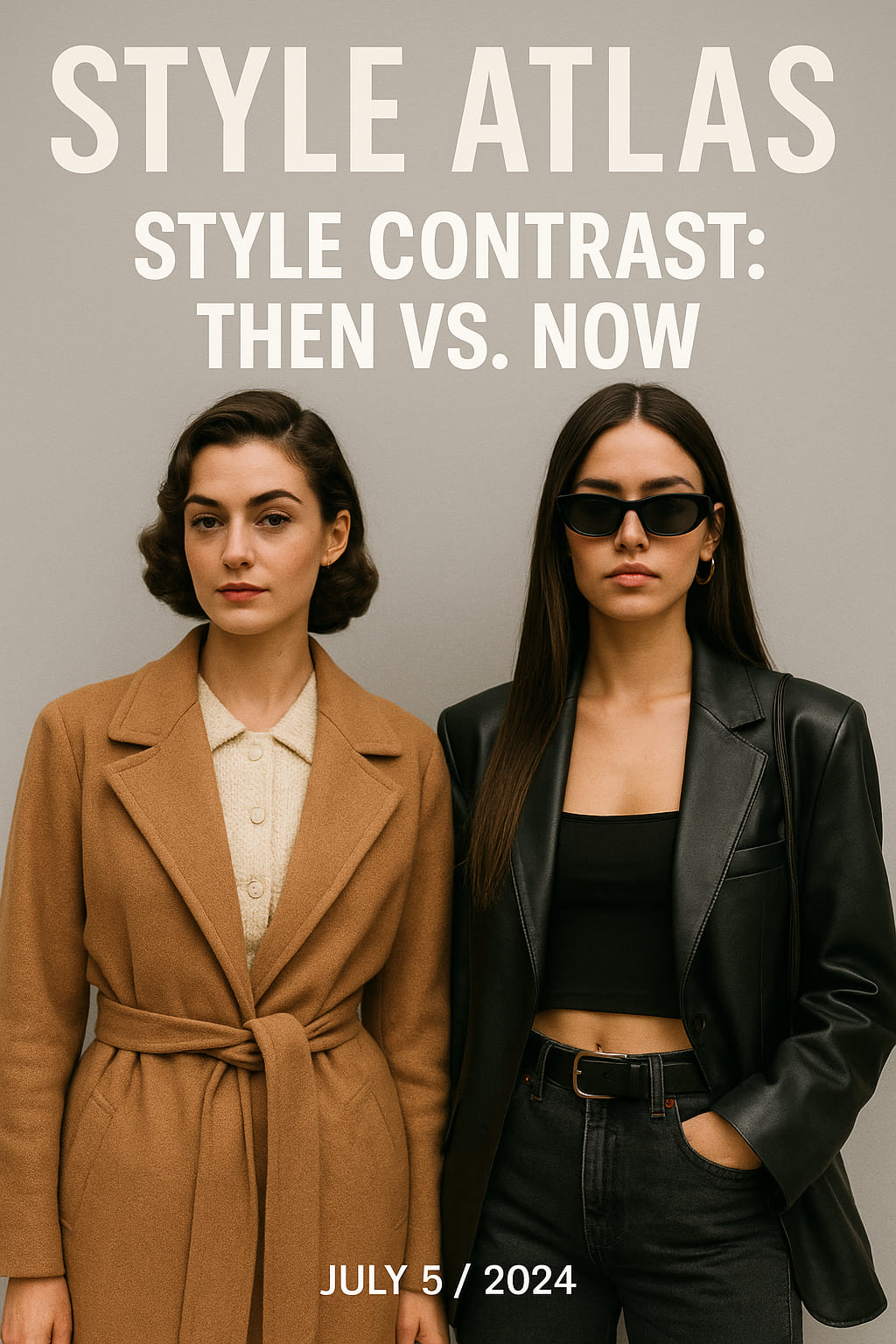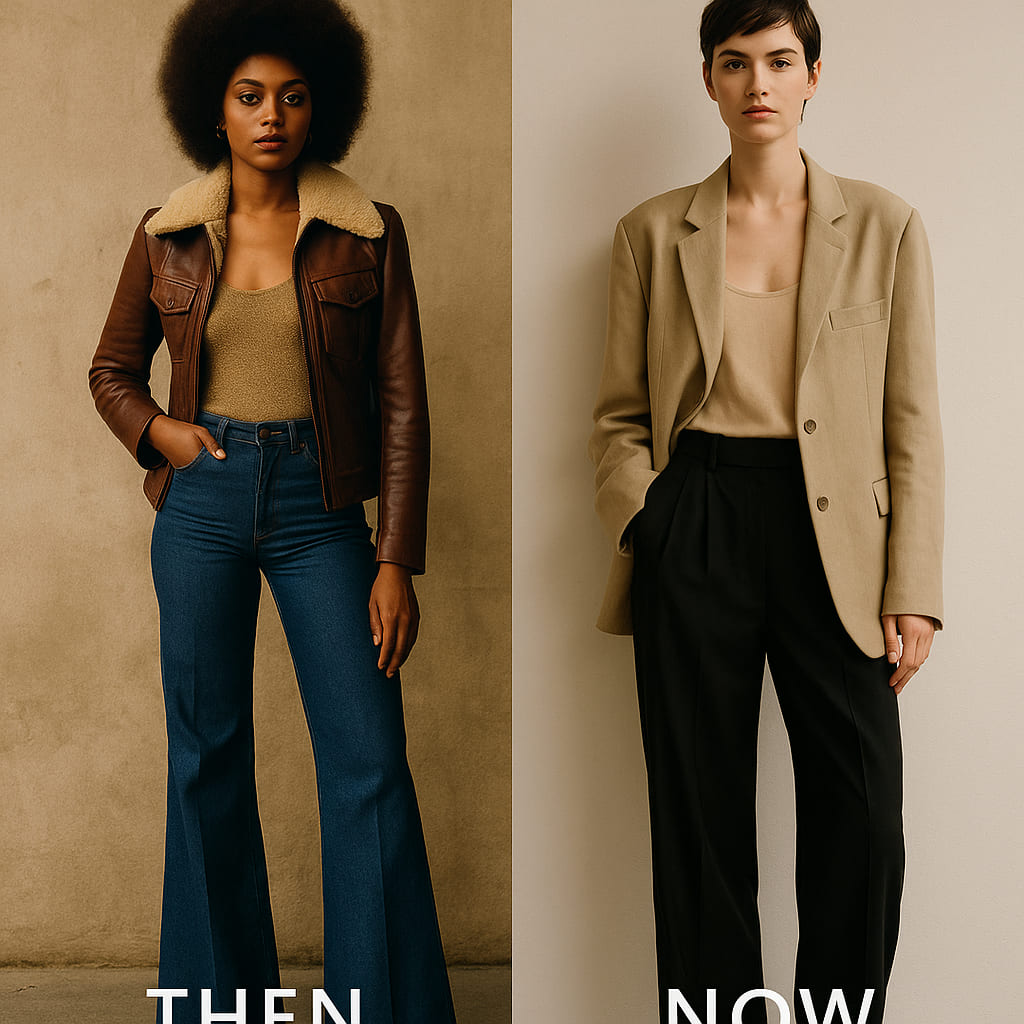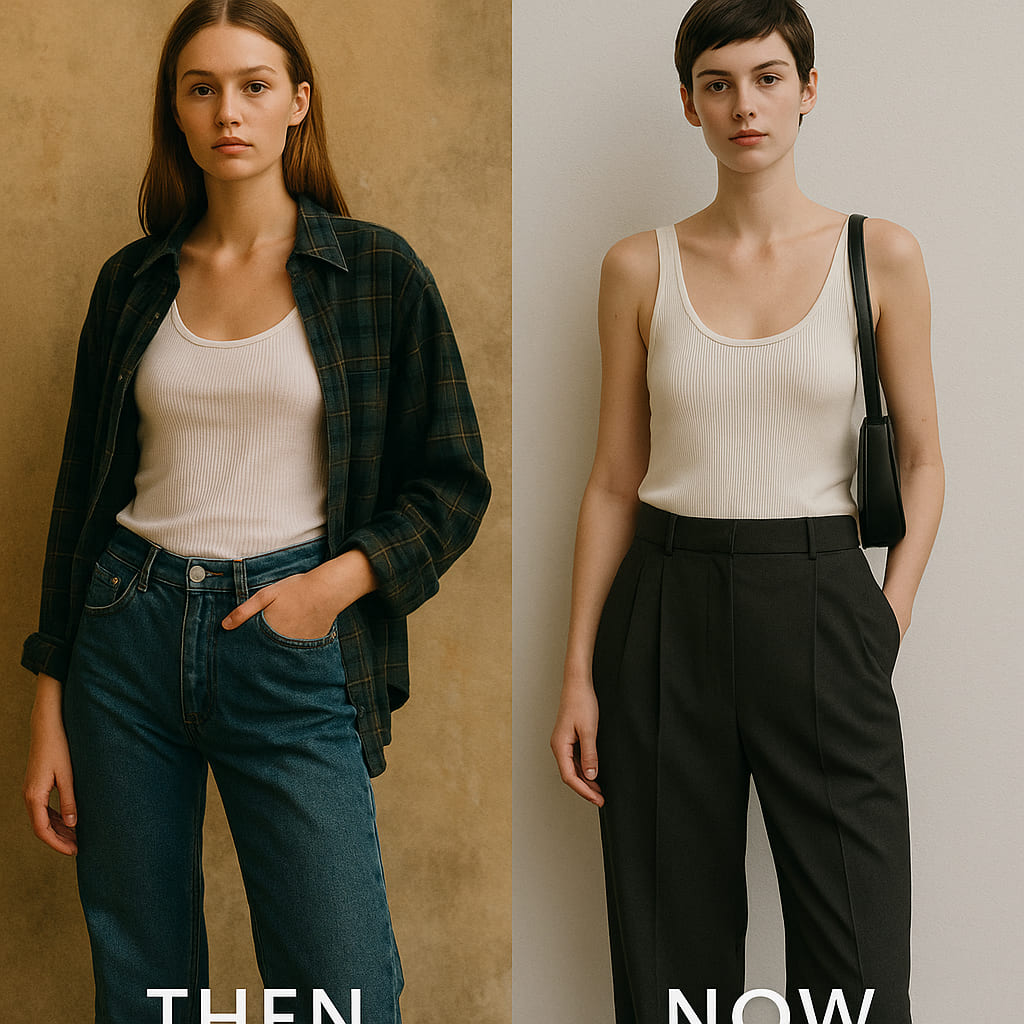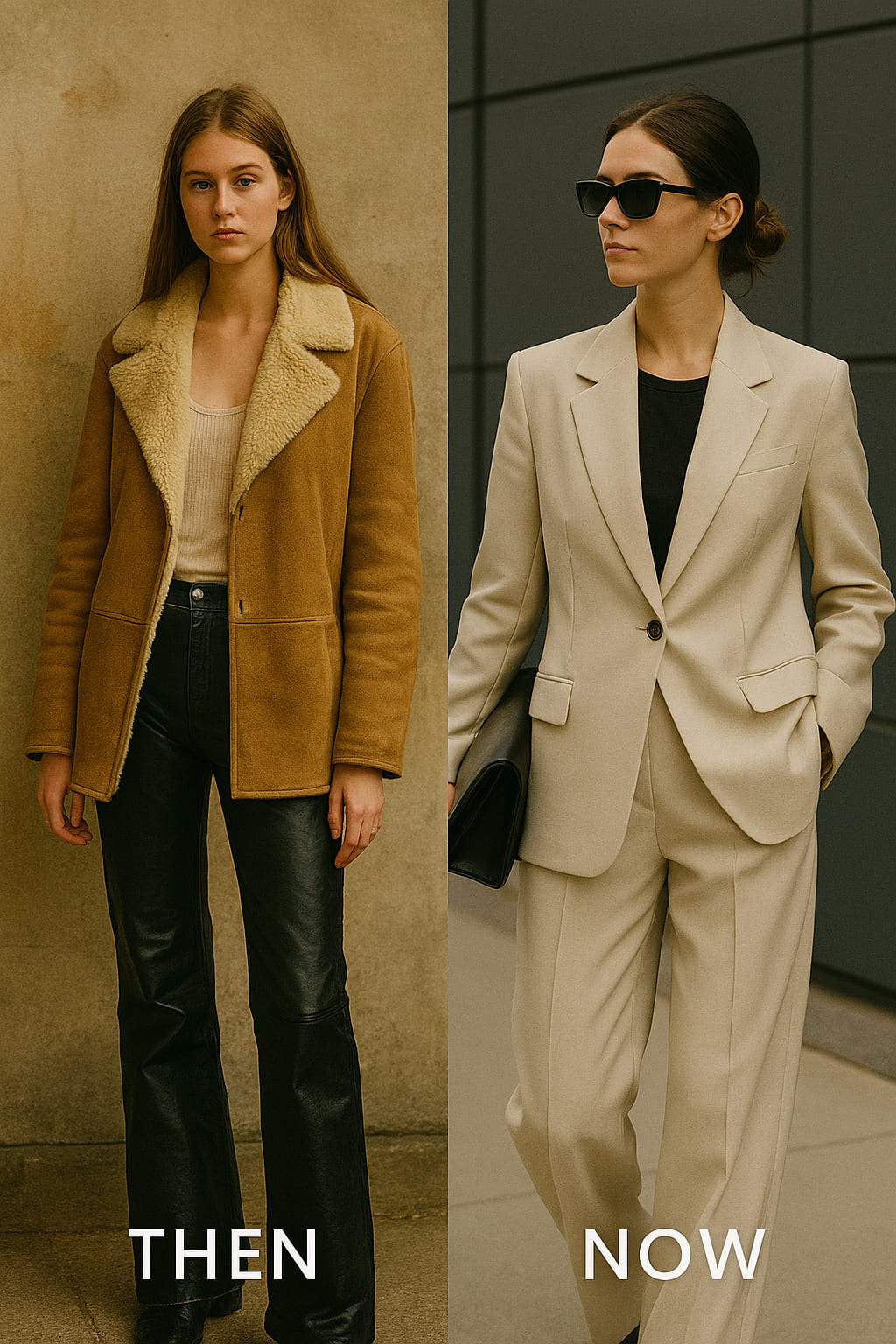Style Contrast: Then vs. Now
From silent rebellion to algorithmic expression, fashion reflects how we move through the world—and how the world moves through us.

Fashion doesn’t just evolve—it contradicts itself, over and over. What we wear is a visual map of where we stand socially, economically, even spiritually. And nothing reveals that more starkly than a side-by-side comparison. “Then vs. Now” isn’t just a meme or TikTok trend—it’s a cultural mirror.
“Style doesn’t follow time. It argues with it.” — Dominique Inoue, visual historian
The 1970s: Style as Statement
The 70s were loud, intentional, and full of tension. Flared pants, psychedelic patterns, power collars—every look was both protest and performance. There was grit in the glam. Clothing was political: Black Panthers in leather jackets, queer communities in sequins and leather, feminists in denim overalls and button-downs.
- Key Motifs: Bell-bottoms, shearling coats, earth tones, disco shine
- Attitude: Defiance meets self-liberation
- Visual Language: Strong silhouettes, fabric layering, imperfect textures

70s power: style rooted in resistance and joy.
The 1990s: The Aesthetic of Apathy
After the excess of the 80s, the 90s brought a shift toward irony and minimalism. Think Kate Moss’s heroin chic, the rise of normcore, and the dominance of logos without obvious branding. Grunge rejected polish. Calvin Klein ads whispered instead of shouting.
- Key Motifs: Slip dresses, flannel shirts, baggy jeans, white tank tops
- Attitude: Disengaged but curated
- Visual Language: Soft decay, layering for mood not utility

90s cool: style that didn’t ask to be understood.
The 2010s: The Rise of Brand Identity
This decade was about *saying* what you wore. Logos returned with force. “Outfit of the Day” culture made style a content category. Fast fashion, streetwear drops, and influencer style collapsed trend cycles. Virgil Abloh’s Off-White redefined irony and status through quotation marks. Instagram created a stage, and everyone became their own stylist.
- Key Motifs: Statement sneakers, logo tees, millennial pink, normcore 2.0
- Attitude: Self-aware, branded identity
- Visual Language: Flat lays, mirror selfies, product shots as style

2010s: fashion as feed—lifestyle and aesthetic blended into one.
Now: Intentional Ambiguity
2025 doesn’t follow a single aesthetic—it’s a tension field. Style now is a balancing act: quiet luxury vs. maximalism, vintage curation vs. futuristic techwear. “Personal style” has replaced trend-chasing. We layer like the 70s, shoot like the 90s, brand like the 2010s—but recombine it with deeper intention.
- Key Motifs: Deconstructed classics, soft tailoring, utility silhouettes, genderless layering
- Attitude: Ambiguity with clarity of purpose
- Visual Language: Moodboard dressing, slow fashion, muted palettes, visual contrast

2025: a blend of archive and invention, styled in silence.
What We Carry Forward
We borrow from every era, but not without editing. From the 70s, we keep the bold silhouettes. From the 90s, the ease. From the 2010s, the concept of curation. But now we dress to reflect—not to perform. The new luxury isn’t the garment itself—it’s the story we assign to it.
“Style now is about emotional texture as much as physical fabric.” — Lamine Kouyaté, art director
Style Isn’t Linear—It Loops
The contrast between eras doesn’t divide us—it fuels us. The conversation continues. The archive speaks. And through visual culture, we remix not just how we look, but how we think, move, and remember.
Words by Style Atlas